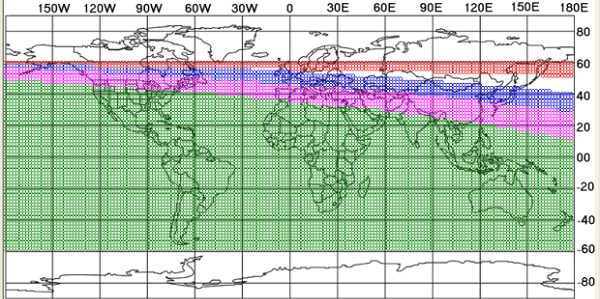It would be impossible to observe the lunar crescent Sunday July 27, 2014, due to an ephemeral appearance of 2 minutes after sunset, said the director of geophysics and astronomy at the National Institute of Meteorology (INM) Samir Ben Abdallah at the TAP agency.
He explained that “during the conjunction of the moon between the sun and the earth, the lit face of the moon would not be visible”. It is a natural phenomenon that occurs every month, he added.
To be able to observe the lunar crescent, it is necessary, first to wait until the angular distance between the sun and the moon reaches 8 ° of arc. Then, the height of the moon must be greater than or equal to 5 ° arc, noted Ben Abdallah.
The two conditions will be carried out from Sunday at 1:52 p.m. At that time the observation of the lunar crescent will be possible in the western center of the Indian Ocean by going west of Africa. In Tunisia, the determination of the first day of Eid (Monday 28 or Tuesday 29 July 2014) is the prerogatives of the Mufti of the Republic.
Eid El-Fitr on Tuesday, according to SAT
The same observation was drawn up by the astronomical company of Tunisia (SAT) which expresses its conclusions as to the observation of the lunar crescent.
The visibility of the Shawal 1435h lunar croissant will not be possible from the Arab and Muslim countries on July 27, 2014, except may be the Comoros, suggesting that the beginning of Shawal would be announced on July 28, 2014 after sunset, and as the first day of the EID on July 29, 2014.
“For Muslims living in the southwest of the Indian Ocean, and since the lunar crescent will reach the topocentric elongation of 8 ° on July 17, 2014 at 3:17 pm Tu and will have a southern ecliptic latitude, as well as a local horizon practically perpendicular to the ecliptic, Shawal could start particularly in the Comoros Islands on July 27, 2014 after the sunset and the day of the Sun Eid would be July 28, 2014.








